As a stargazing enthusiast, you know the moon’s phases can dramatically transform the night sky, offering a unique backdrop for your celestial observations.
Yet, this very transformation poses a challenge. A full moon’s brightness can obscure the delicate twinkling of distant stars and planets, while a new moon might leave you wondering what marvels you’re missing out on.
In this article, I’ll guide you through understanding how moon phases impact stargazing. You’ll learn to harness these lunar cycles to enhance your astronomical experiences, ensuring every stargazing session is as rewarding as possible. Let’s embark on this lunar journey together!
Key Things to Know
- The moon’s brightness affects visibility; new moons offer the darkest skies for stargazing.
- Light pollution and weather are crucial factors; find dark, clear spots for the best views.
- Essential gear includes a red light flashlight, star maps, and a comfortable viewing setup.
- Special astronomical events like meteor showers and eclipses are prime viewing opportunities.
Stargazing Conditions: Stargazing After Moonset
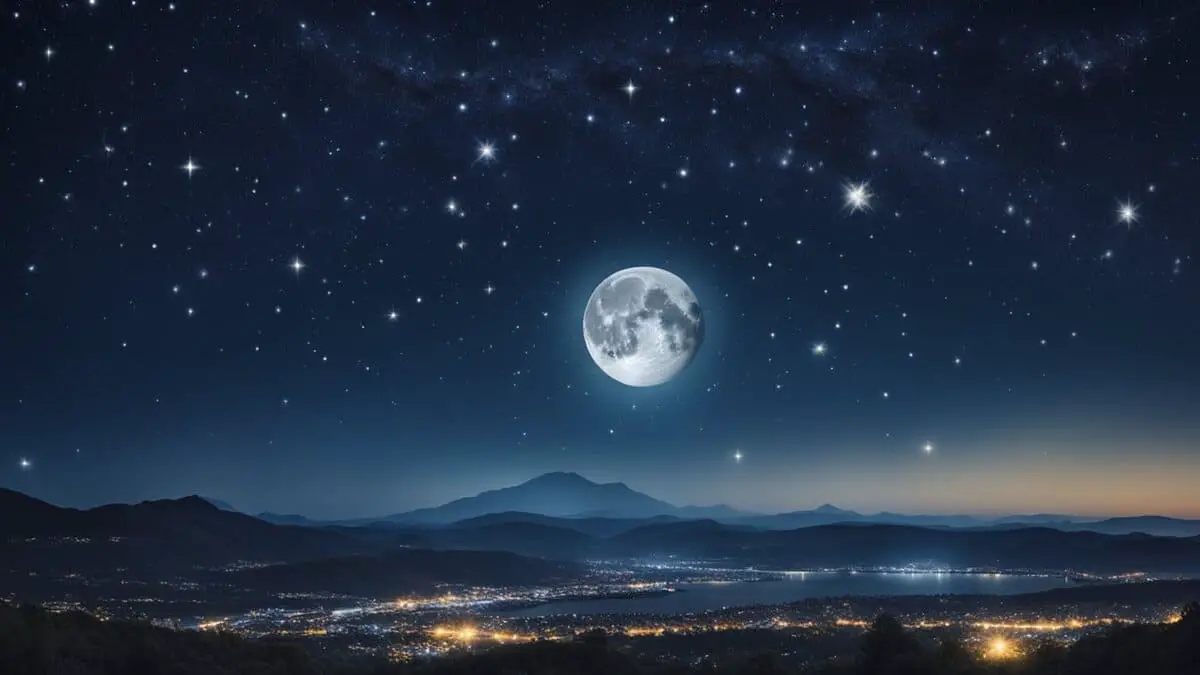
The moon’s phase can change how you view the stars and planets.
During my stargazing sessions, I’ve noticed how the moon’s phase dramatically changes the night sky’s appearance. You can see deeper into the night sky when there’s less moonlight.
Why does it matter?
The moon can be really bright. When it’s full, it makes the sky glow.
I’ve often observed this glow, which can overshadow fainter celestial objects. That means fewer stars to see with your own eyes or through binoculars.
- New Moon: The moon is not visible, so the sky is super dark.
- Right before Moonrise: The sky is dark because the moon hasn’t come up yet.
- Right after Moonset: The moon has just gone down, giving you a brief dark sky.
FREE STARGAZING CHECKLIST
My 5-page Stargazing Checklist will enhance your astronomical observations.
Follow this free checklist to navigate the night sky with confidence, clarity, and a sense of preparedness for a rewarding stargazing experience.

Here’s a quick guide on the moon phases:
- New Moon: Best darkness for stargazing.
- Waxing Crescent: Good, but it gets a bit brighter each night.
- First Quarter: Okay, but there’s more light in the sky.
- Waxing Gibbous to Full Moon: Pretty bright—best for looking at the moon, not stars.
- Waning Gibbous to Last Quarter: It starts getting good for stargazing again.
- Waning Crescent: The light gets dimmer every night—great for stargazing!
In my experience, light pollution from cities significantly affects stargazing quality.
Clear skies are also crucial for seeing those twinkling stars. Weather plays a role: no clouds mean a better view.
If you’re into astronomy, even as a hobby, think about the moon phases. They make a big difference in what you can see up there in space.
Watch the moon’s schedule to plan your next stargazing night!
Preparing for a Stargazing Session
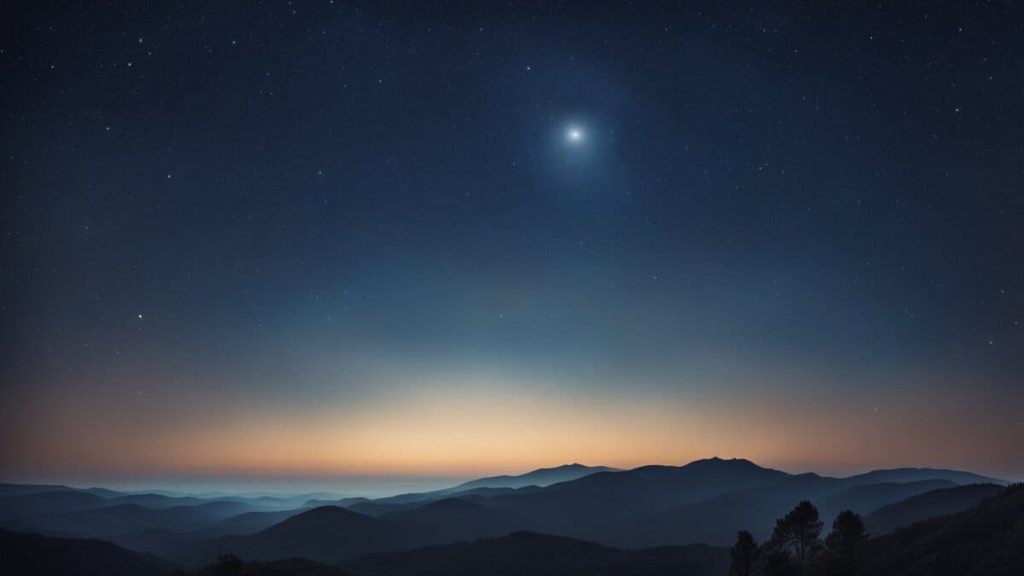
To have an incredible stargazing experience, you must find the perfect time and spot and ensure you have the right gear.
My own stargazing experiences have taught me the importance of timing and location.
Let’s dive into how you can make your next stargazing adventure unforgettable.
Choosing the Right Time and Location
- Look for the Dark: The darker the sky, the better you’ll see the stars. Going out on a new moon night when the moon doesn’t outshine celestial objects is ideal.
- Check the Weather: Clear skies mean more stars. Use a stargazing app to make sure clouds won’t block your view.
- Avoid City Lights: Stay away from light pollution. Find a dark sky park like Acadia National Park in Maine if you can, or just a quiet spot in the country.
- Wait for Moonset: When the moon sets, the sky gets darker. This happens after sunset, making post-moonset the prime time for observing the stars.
Essential Stargazing Equipment
- Bring a Red Light: I personally recommend using a headlamp with a red light, as it has dramatically improved my night vision during observations.
- Star Maps Are Key: Bring a star map or planisphere. These help you find and identify constellations in the sky.
- Binoculars or Telescope: Even a simple pair of binoculars can bring the moon and planets like Jupiter and Saturn into clear view.
- Comfort is Important: Remember to use a chair or blanket. You’ll be looking up for a while, so make sure you’re comfortable.
Navigating the Night Sky
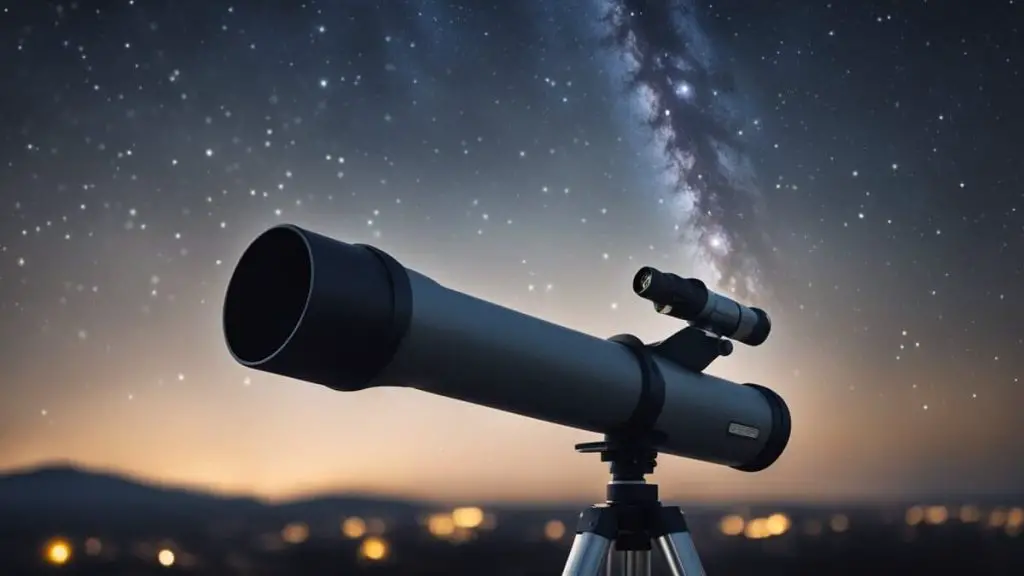
When you look up at the night sky after the moon has set, it’s like a cosmic treasure map waiting for you to uncover its secrets.
You can spot planets, behold the majestic Milky Way, and pick out constellations that tell stories from ancient times.
In my stargazing journey, I’ve been captivated by the sight of planets, the Milky Way, and the storytelling constellations.
Identifying Celestial Objects
To start your stargazing adventure, let’s focus on spotting some key points of light:
- Planets: Jupiter and Saturn are often visible and brighter than most stars.
- Brightest Stars: Look for intensely shining stars like Sirius and Vega.
- Constellations: They’re patterns of stars, like the Big Dipper, which help you navigate the sky.
- The Milky Way: This is our galaxy, a cloudy band across the sky filled with stars, planets, and nebulae.
Astronomy apps can guide you in real time to identify these objects, and it’s thrilling to discover a comet or witness a meteor shower happening right above you.
Using Astronomical Charts and Technology
Technology can be your ally under the stars. Here’s how to use it effectively:
- Stargazing Apps: Download an app to your smartphone. It’s like having a personal planetarium in your pocket.
- Star Charts: Old-school but reliable charts give you a monthly map of the sky’s highlights.
- Stellar Navigation Tools: Learn basic navigation using stellar references like Polaris the North Star.
With these tools, you can dive into the deeper layers of the night, exploring galaxies far beyond our own.
Remember, a dark sky is your best friend for stargazing, so find a spot away from the city lights and give your eyes time to adjust to the darkness.
Special Astronomical Events
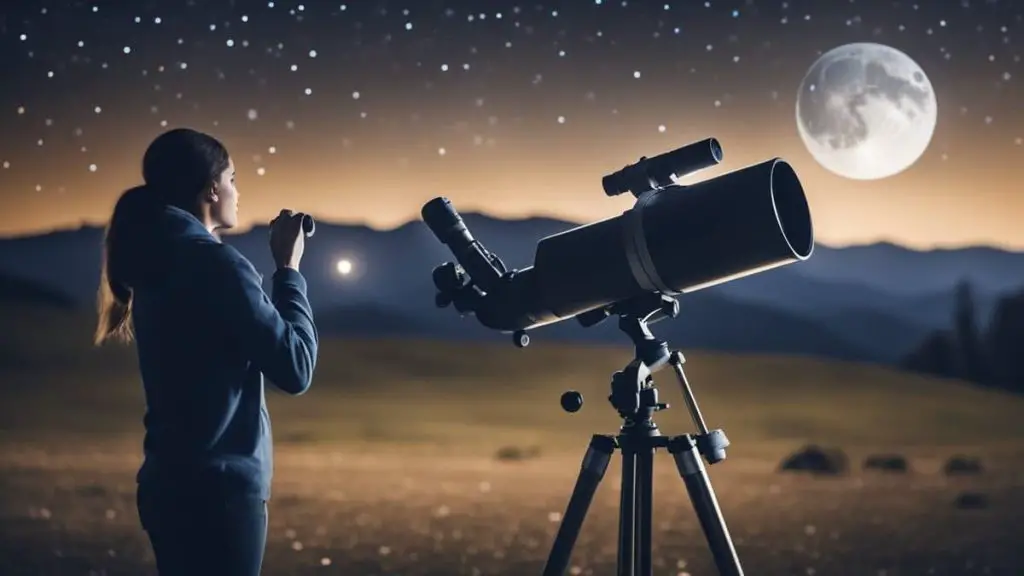
You’re in for a real treat when you look up at the night sky after the moon sets. The darkness makes it easier to spot some of the sky’s most dazzling displays.
Here’s what you can expect to see throughout the year.
Meteor Showers and Comets
- Meteor Showers: Catch the Quadrantids, peaking in January when you can see up to 40 shooting stars an hour under clear, dark skies. Another summer favorite is the Perseid meteor shower, which you can enjoy in August with up to 100 meteors per hour. Make sure to mark your calendars for these celestial events and find a dark spot away from city lights to get the best view.
- The Lyrid Meteor Shower offers an excellent show in April. Planets sometimes also dazzle alongside these showers, creating a spectacular scene. For a detailed list of dates, these showers and the visibility forecast can help you plan your stargazing nights.
- Comets: These ice-and-rock visitors from the distant parts of our solar system can be trickier to predict. But when they become visible, comets like NEOWISE can offer a stunning sight with their glowing tails. Keep an eye on astronomy news for any comet forecasts.
Lunar and Solar Eclipses
- Lunar Eclipses: You can witness the beauty of a lunar eclipse, where the Earth casts a shadow over the Moon. They happen at least twice a year and are visible from anywhere on the night side of the Earth. They’re safe to watch with your naked eye, each unique.
- For instance, September brings the Earth’s shadow into play. Check a reliable forecast to know when you should be outside to watch.
- Solar Eclipses: A solar eclipse is a rare treat, happening somewhere on Earth about every 18 months. Always use proper solar viewing glasses to protect your eyes. In 2024, there will be a total solar eclipse on April 8th. This is a must-see event where the Moon completely covers the Sun.
Remember, lunar and solar eclipses are fantastic to watch and important for science. Eclipses help astronomers and scientists learn more about the Sun and the Moon.
Join a star party for these events if you want to enjoy them with fellow astronomy enthusiasts.
Stargazing Tips for Beginners
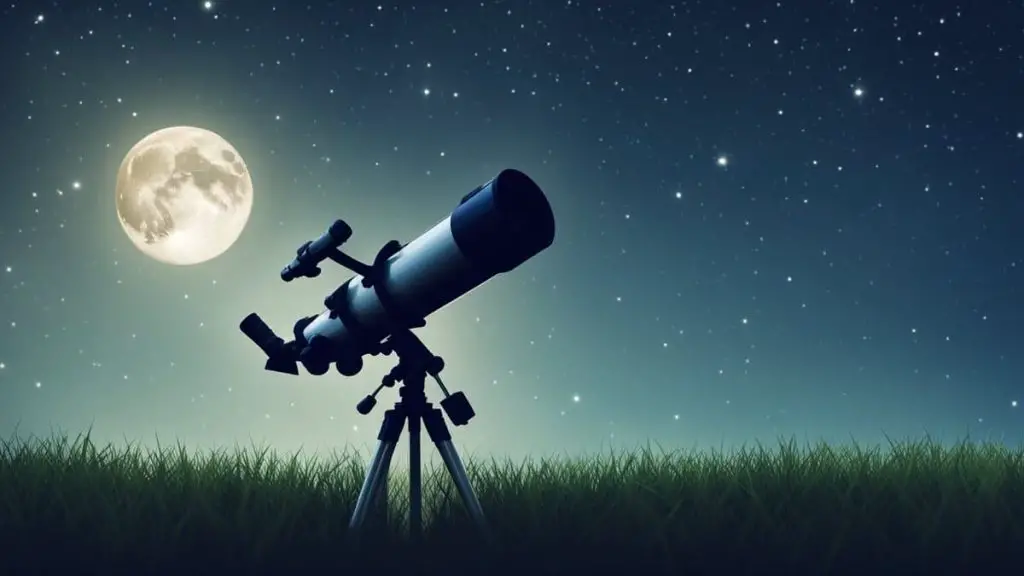
Embracing the night sky’s wonders starts with a few simple steps and the right gear.
These tips will have you observing celestial marvels from your backyard or a dark sky park in no time.
Getting Started with Stargazing
Equipment You’ll Need:
- Telescope or Binoculars: A good pair of binoculars is a great, portable way to start, especially if you’re on a budget. If you’re ready for a deeper look, a beginner’s telescope can bring planets and constellations into view. My first stargazing tool was a simple pair of binoculars, proving an excellent and affordable choice.
- Star Chart or App: Help identify what you see with a physical star chart or a stargazing app. A printed map is low-tech but reliable, and some apps can even point you in the right direction using your phone’s compass.
Understanding the Sky:
Begin by learning the major constellations and the movement of the stars. Note that planets like Jupiter and Saturn can also be spotted without a telescope—they look like exceptionally bright stars.
Choosing Stargazing Resources
Books and Guides:
Pick up beginner-friendly astronomy books or stargazing guides at your local bookstore or library. They often have charts and tips to enhance your knowledge and experience.
Learning from Others:
- Consider visiting places like Acadia National Park or joining a star party to learn from experienced stargazers.
- Local observatories often hold public viewing nights; take advantage of these to see the sky through powerful telescopes and learn from experts.
Online Communities:
Many cities, like Portland, have amateur astronomy clubs and online forums where you can get advice tailored to your area, like where to find the best dark skies or when the next meteor shower will be visible.
Remember, you don’t need to memorize all the stars in one go or get the most expensive equipment. Start simple, be patient, and enjoy the process of discovering the night sky.
Enhancing the Stargazing Experience

To make the most of your time under the stars, it’s essential to master a few basics of astrophotography and ensure you’re comfortable and safe.
Astrophotography Basics
Astrophotography lets you capture the night sky’s wonders with a camera and a telescope. Capturing the night sky’s beauty through astrophotography has been a rewarding aspect of my stargazing journey.
Here’s how to start:
- Choose a telescope: A good telescope can magnify dim objects like distant galaxies.
- Camera settings: Use a camera capable of long exposure times to record celestial photography.
- Astrophotography techniques: Learn to take images by tracking stars using a star chart or a stargazing app.
Stargazing Comforts and Safety
Being comfortable and safe makes stargazing even more enjoyable.
Here’s what you need:
- Stay warm: Bring a blanket and dress in layers; nights can be cold.
- Use red-light: A flashlight with a red-light function helps you see without affecting visibility or your night vision.
- Choose the right spot: Look for areas with dark skies and clear skies to reduce light pollution.
Remember, safety first. Tell someone your location and bring a friend if you can.
Frequently Asked Questions
Can I stargaze effectively from my backyard in a city, or do I need to travel to darker areas?
Yes, you can stargaze effectively from your backyard in a city, but your experience may be limited due to light pollution. Traveling to darker areas with less light pollution is highly recommended for the best views, especially of fainter objects.
How often do the phases of the moon change, and how does this affect my stargazing schedule?
The moon’s phases change approximately every 29.5 days, completing a full cycle. This lunar cycle is crucial in planning your stargazing schedule, as different phases offer varying viewing conditions for celestial objects.
Are there any mobile apps that can enhance my stargazing experience?
Yes, there are several mobile apps designed to enhance your stargazing experience. These apps often feature augmented reality to identify stars, planets, and constellations, provide information on astronomical events, and even offer guided night sky tours tailored to your location and time.
TL;DR
- The moon’s phases significantly affect stargazing; new moons offer the best darkness for observing stars and planets.
- To optimize your stargazing experience, avoid light pollution, check weather conditions, and choose the right time, preferably during moonset.
- Essential equipment includes red light flashlights, star maps or planispheres, binoculars or telescopes, and comfortable viewing accessories.
- Special astronomical events like meteor showers, comets, and eclipses provide unique and spectacular viewing opportunities.
- Utilize stargazing apps and technology for navigation and identification, and try astrophotography to capture the night sky’s beauty.
I’m here to share my passion and knowledge about stargazing, but I also love learning from your experiences and inquiries.
If you have any questions or thoughts, or if there’s something specific you’re curious about in the vast world of astronomy, please feel free to comment below. Let’s keep the conversation shining as brightly as the stars!
Read additional articles in my Night Sky series:



